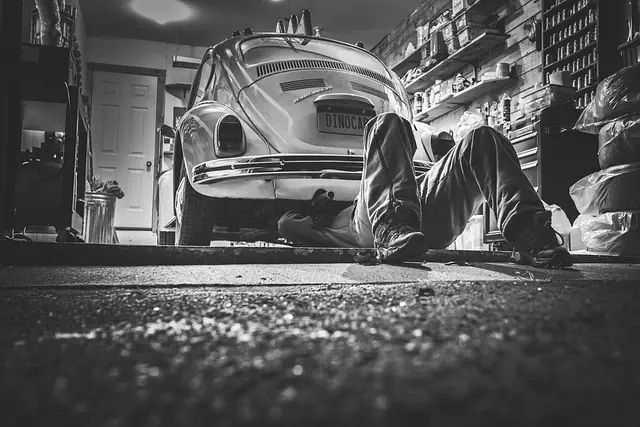Before installing car speakers in Toledo, research your vehicle's audio system, gather necessary tools (for DIY or professional), remove old speakers safely, prepare mounts and wiring harness, place and align new speakers correctly, test and calibrate audio performance thoroughly, and finish with maintenance tips for long-lasting enjoyment. Whether DIY or professional, these steps ensure a successful car speaker upgrade in Toledo.
Are you ready to enhance your driving experience with crystal-clear sound? This comprehensive guide dives into the world of car speaker installation, catering to both DIY enthusiasts and those seeking professional tips. From understanding your car’s sound system to final touches, we cover every step, including a detailed DIY car speaker installation process. Learn how to remove current speakers, prepare mounts and wiring, install new speakers, test, calibrate, and maintain for optimal audio enjoyment, all tailored for your car speaker installation Toledo.
- Understanding Your Car's Sound System: A Pre-Installation Checklist
- Gathering the Right Tools and Equipment for DIY Installation
- Removing Your Current Car Speakers: Step-by-Step Guide
- Preparing the Speaker Mounts and Wiring Harness
- Installing New Speakers: Placement, Alignment, and Connections
- Testing and Calibrating Your Car Audio System
- Final Touches and Maintenance Tips for Longevity
Understanding Your Car's Sound System: A Pre-Installation Checklist
Before diving into the installation process, understanding your car’s existing sound system is crucial for a seamless upgrade. Start by familiarizing yourself with the components and layout of your vehicle’s audio system. Check the user manual or consult online resources specific to your car model to identify speakers, amplifiers, head units, and other relevant parts. This knowledge will help you assess what needs replacement or upgrading during the DIY car speaker installation in Toledo or a professional car speaker installation process.
Conduct a thorough pre-installation checklist to ensure everything is in order. Verify if the doors and panels are easily accessible for removal. Inspect cables and wires for any signs of damage or wear and replace as necessary. Ensure compatible equipment, especially when considering a professional car speaker installation, to guarantee optimal sound quality and functionality. Double-check connections and grounding to prevent future issues.
Gathering the Right Tools and Equipment for DIY Installation
When tackling a car speaker installation in Toledo or any other location, having the right tools is paramount for a successful DIY project or ensuring professional-level work. For a basic setup, you’ll need some essential items like a set of high-quality speakers compatible with your vehicle, installation hardware (usually included with the speakers), and a pair of precision screwdrivers.
For more advanced installations, consider investing in additional tools such as an impact driver for quicker and cleaner cuts, a measuring tape to ensure accurate positioning, and even a soldering iron if you plan to upgrade your wiring. Professional car speaker installations often utilize specialized equipment for precise adjustments and seamless integration, so if aiming for a top-tier result, don’t hesitate to consult a expert or acquire the best tools available.
Removing Your Current Car Speakers: Step-by-Step Guide
Removing your current car speakers is a crucial step in any car speaker installation process, whether you’re taking on the task yourself (DIY) or hiring a professional for a Toledo-based service. Here’s a straightforward guide to help you navigate this initial phase:
1. Safety First: Before beginning, ensure your vehicle’s electrical system is off and the engine is cooled down. This prevents any accidents while working with loose wires. Identify the speakers you wish to replace, typically located in the doors or trunk. Use a screwdriver to carefully remove the screws securing the speaker housing, taking note of where each screw belongs for future reference. Gently pull the old speakers out of their mounts, being mindful of any cables or wiring still attached.
Preparing the Speaker Mounts and Wiring Harness
When preparing for your car speaker installation in Toledo, whether DIY or enlisting professional help, the first step involves meticulously getting your speaker mounts and wiring harness ready. For a do-it-yourself approach, ensure all hardware is accounted for – including brackets, screws, and any necessary adaptors – and inspect the harness for any visible damage or fraying. A professional installation will involve checking that all components are compatible with your vehicle’s make and model, and ensuring proper fitment before beginning any assembly.
This preparation phase is crucial as it directly impacts the success of your car audio upgrade. For DIY enthusiasts, taking the time to organize and test these elements ensures a smoother installation process. Conversely, professionals leverage their expertise to identify potential issues early on, guaranteeing optimal results.
Installing New Speakers: Placement, Alignment, and Connections
When installing new speakers in your car, proper placement and alignment are key to achieving optimal sound quality. Start by identifying the ideal locations for your front and rear speakers based on your vehicle’s design and desired audio coverage. Generally, front speakers should be mounted in the door panels or on the dashboard, while rear speakers find their place in the doors or the trunk. Ensure each speaker is securely fastened using the appropriate brackets or mounting hardware provided with your car audio system.
Alignment is equally important for precise sound projection. Adjust the speakers’ angles and direction towards the listening area to minimize reflections and maximize clarity. Use a measuring tape or your vehicle’s headunit settings (if equipped) to ensure accurate placement and alignment. Once the speakers are correctly positioned, make the necessary connections. Ensure power and signal cables are securely plugged into corresponding terminals, matching colors for positive and negative connections. Test each connection thoroughly before moving on to the next step to prevent any potential issues during playback.
Testing and Calibrating Your Car Audio System
After successfully installing your new car speakers, it’s crucial to test and calibrate your audio system for optimal performance. This involves adjusting various settings on your stereo or amplifier to ensure that each speaker is functioning correctly and delivering clear, balanced sound across all frequencies. Start by turning up the volume and adjusting the balance controls to centre the soundstage between your seats. Next, use your stereo’s equalisation settings to fine-tune the bass and treble levels, tailoring them to your preference and vehicle acoustics.
A professional car speaker installation goes beyond mere fitting; it includes precise testing and calibration for a truly immersive listening experience. This is especially important in vehicles with unique interiors or soundproofing, where factory audio systems may not deliver the best results out of the box. By taking the time to calibrate your system, you can unlock the full potential of your upgraded speakers, enjoying music and audiobooks with unparalleled clarity and richness.
Final Touches and Maintenance Tips for Longevity
After successfully installing your new car speakers, it’s important to finish with some final touches and maintenance tips for longevity. First, ensure all connections are secure and tight, checking the speaker wires for any damage or loose ends. Properly sealing and securing the speakers within their mounts will also prevent vibrations from causing issues over time.
Regular cleaning of your car audio components is crucial. Dust and debris can accumulate, affecting sound quality. Use a soft microfiber cloth to wipe down the speakers and their surrounds. Additionally, keep an eye on the condition of your speaker cables; replace them if they show signs of wear or damage. A professional car speaker installation may involve more advanced maintenance routines, but DIY enthusiasts should stay vigilant with basic care for optimal audio enjoyment.


